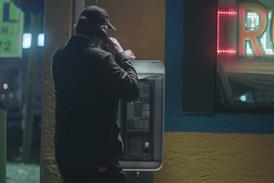At a time when digital seems to be replacing tape-based production and delivery in many aspects of the production cycle it may seem odd that a tapeless TV world may seem, well, a world away.
For clients of ITN Source, today’s announcement that we are offering digital delivery of broadcast quality archive clips rather than couriering tapes all over the globe is another step closer towards moving tapeless; but it’s taken a long time to get here and there is still some way to go further still.
At ITN, we have undergone incremental change and the journey began for us in 2006 when we started digitising our material as we archived footage on the day – the content was a combination of the ITN news clean feeds, the finished bulletins and rushes.
From that time, our central archiving process became tapeless so that footage being archived into the digital asset management system (DAM) was ingested from the news production servers, and the cataloguing was carried out using the frame accurate QuickTime proxies that were generated from the DAM files.
The footage may still have often been arriving into the building on tape but we were almost instantly digitising it nonetheless.
But, whilst we started to build up our digital content at rapid pace, old habits proved hard to change and our customers were still often ordering screeners on VHS and master material on Beta SP, gradually migrating over the years to DVD and Digibeta. Even this change to DVD and Digibeta had little impact on costs and the time spent creating these and couriering them was largely the same.
The key to moving away from tape to digital, however, lies in the breadth of content on offer.
Whilst mass digitisation projects can seem ridden with risk, as the escalating costs of the much publicised Digital Media Initiative proved, ITN took a giant leap into the brave new world and digitised our entire archive dating back to 1955 and spanning 30,000 film cans and legacy tape formats.
That investment was the step change that we needed as the completion of our Project Digital Archive in 2011 coincided with a shift away from tape towards file based delivery.
The factors that influenced this shift by our customers were speed of delivery, tighter budgets, and, crucially, accessibility of archive material.
But the challenges didn’t end there of course. In the earlier days of digital file delivery, customers began asking for preview quality files that they could easily share with colleagues.
Over the last couple of years we have seen a massive uplift in file based master orders – beginning with H.264 at 10Mbps, then 15Mbps and more recently, a drive towards larger, higher quality, less compressed files.
This meant we had to work with customers to ensure they had adequate internet bandwidth, the correct facilities for large downloads and playback, and of course an understanding of what can seem like a bewildering array of file formats, codecs and tech specs.
What I’ve learnt is that there are a lot of different elements to seriously consider about when you go tapeless, whether you are an archive or a producer.
These issues span right through from how the footage is captured, what formats should be used, how should the footage be stored, named and delivered, how the footage is processed and managed once it arrives, and who needs access to it.
But as technology and understanding improves, the benefits are there to be seen. In my case it’s that we no longer receive boxes and boxes of tapes to keep in our storage facility in perpetuity as tapes become replaced by camera cards, hard drives and file storage.
Now that we’re at a point where we are aware of the digital challenges - even if we haven’t quite overcome some of them - getting our heads around tapeless workflow is becoming easier.
It is this attitude combined with increased volumes of readily available digitised content that is making the traditionally old-fashioned world of archive one of the fully tapeless component parts of the production process.
Kathey Battrick is director of operations at ITN Source


























No comments yet